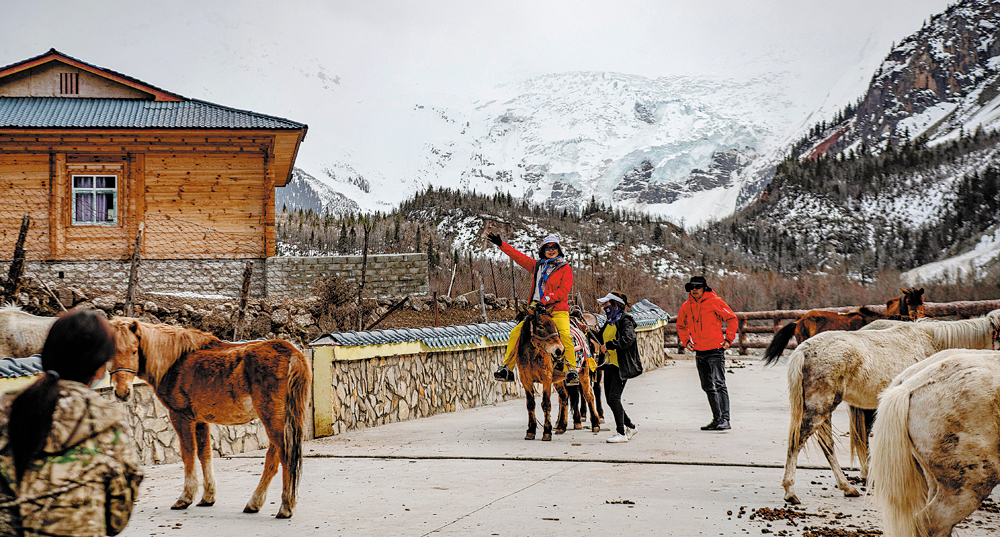Taking trips to destinations with fewer people and beautiful natural sceneries has become a trend in China since the COVID-19 pandemic, and it has fueled a niche for rural tourism, which is becoming more high-end and vacation-oriented.

Tourists return from a glacier tour in Tibet autonomous region in April. [Photo/Xinhua]
More young travelers are taking journeys to the countryside, and they are showing more personalized and diversified demand. A large number of cultural tourism towns, bed-and-breakfast businesses with distinctive features, and high-end camping options have thus emerged in rural areas.
Major travel agencies are also making efforts in developing the rural tourism market, driven by the newly emerged consumption demand. In March 2021, Trip.com Group, China's largest online travel agency, launched a rural tourism revitalization strategy. It aims to build high-end farm and village resorts that integrate with rural cultures nationwide and attract more travelers.
By the end of last year, Trip.com had built eight such rural resorts in China, and they are located in Anhui, Hunan, Henan, and Jiangxi provinces and the Xinjiang Uygur autonomous region.
By the end of 2025, the company aims to bring the total number of such rural resorts to 100, it said.
"Rural tourism is a golden key to rural revitalization, and high-end accommodation products serve as the core that will drive the high-quality development of rural tourism," said Liang Jianzhang, chairman of the board of Trip.com.
In April, the Ministry of Culture and Tourism, together with five other ministries, jointly issued a guide to promote rural revitalization with the empowerment of cultural sectors.
For instance, local governments should further develop creative design, performance, music, art, handicrafts and digital culture to help revitalize rural development.


